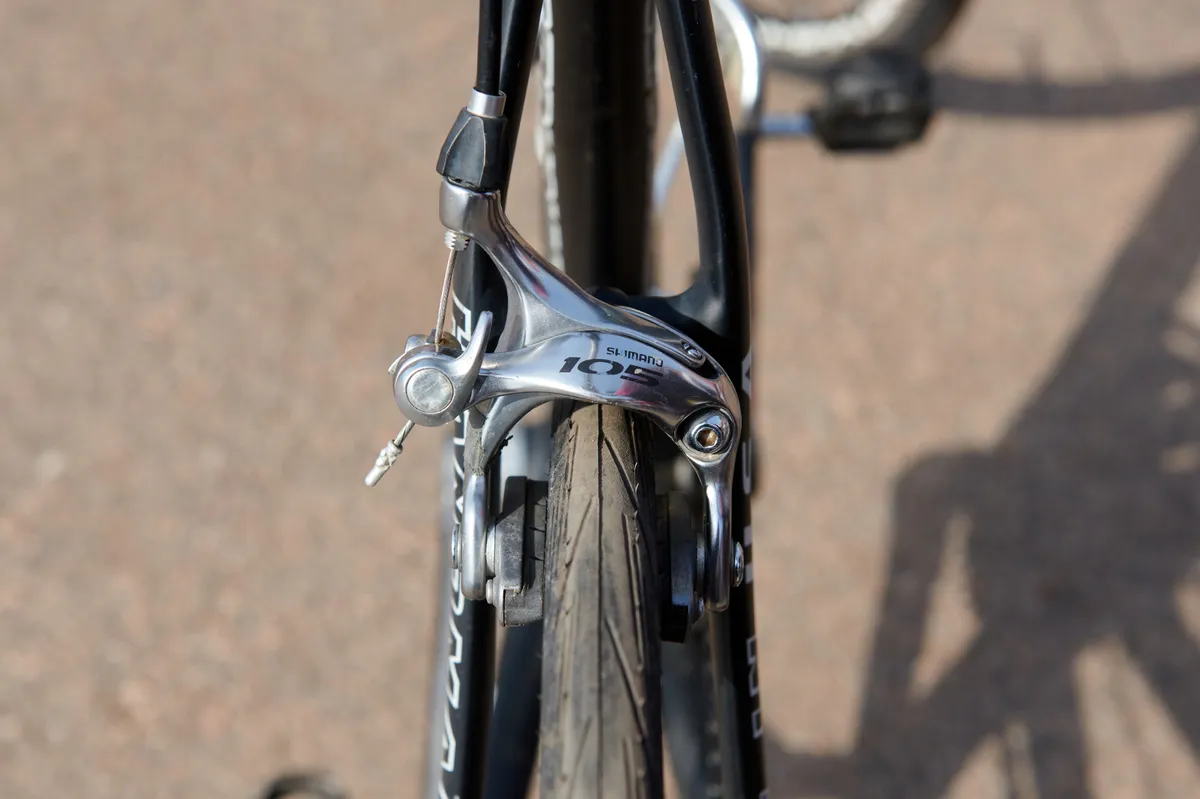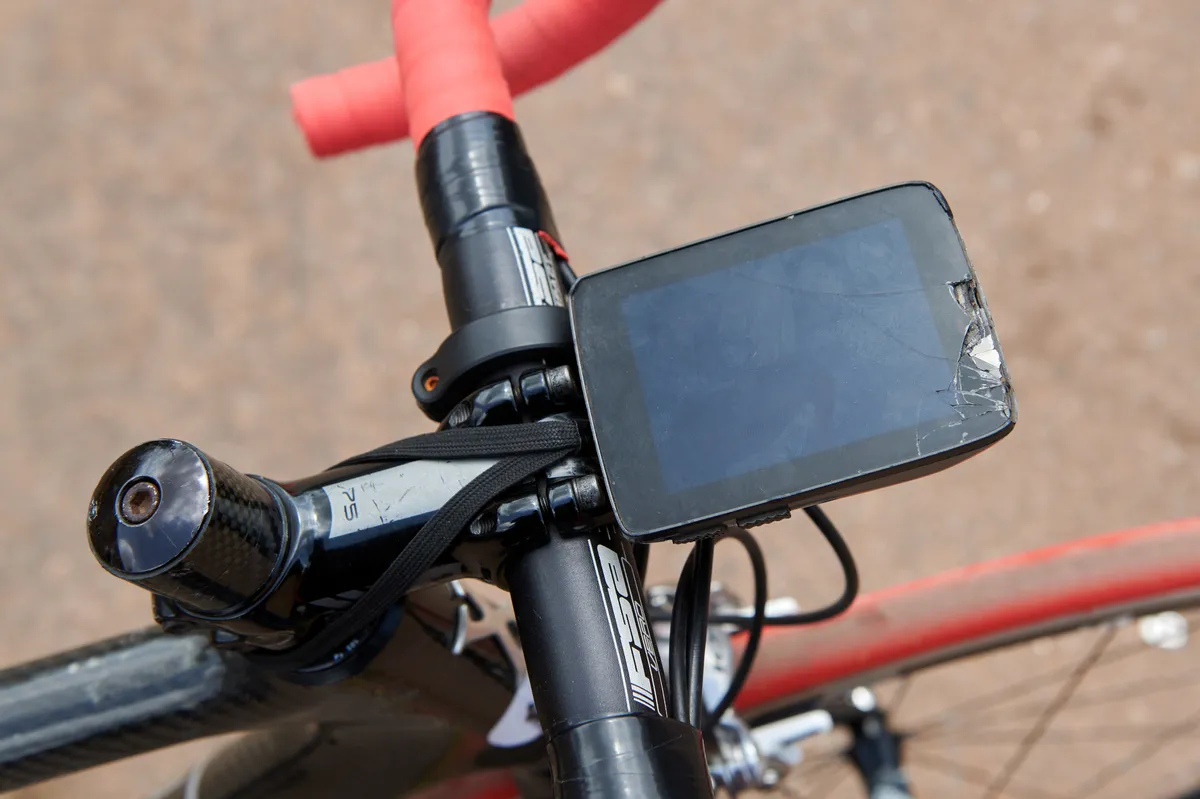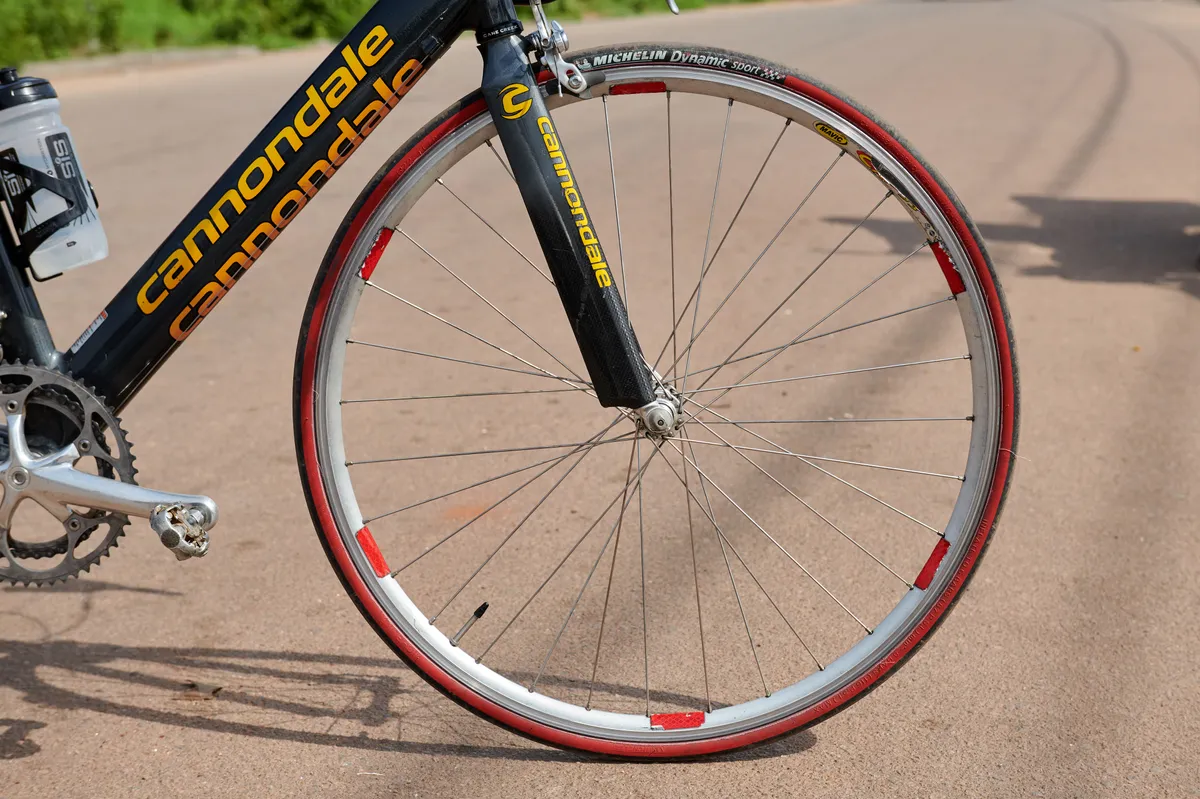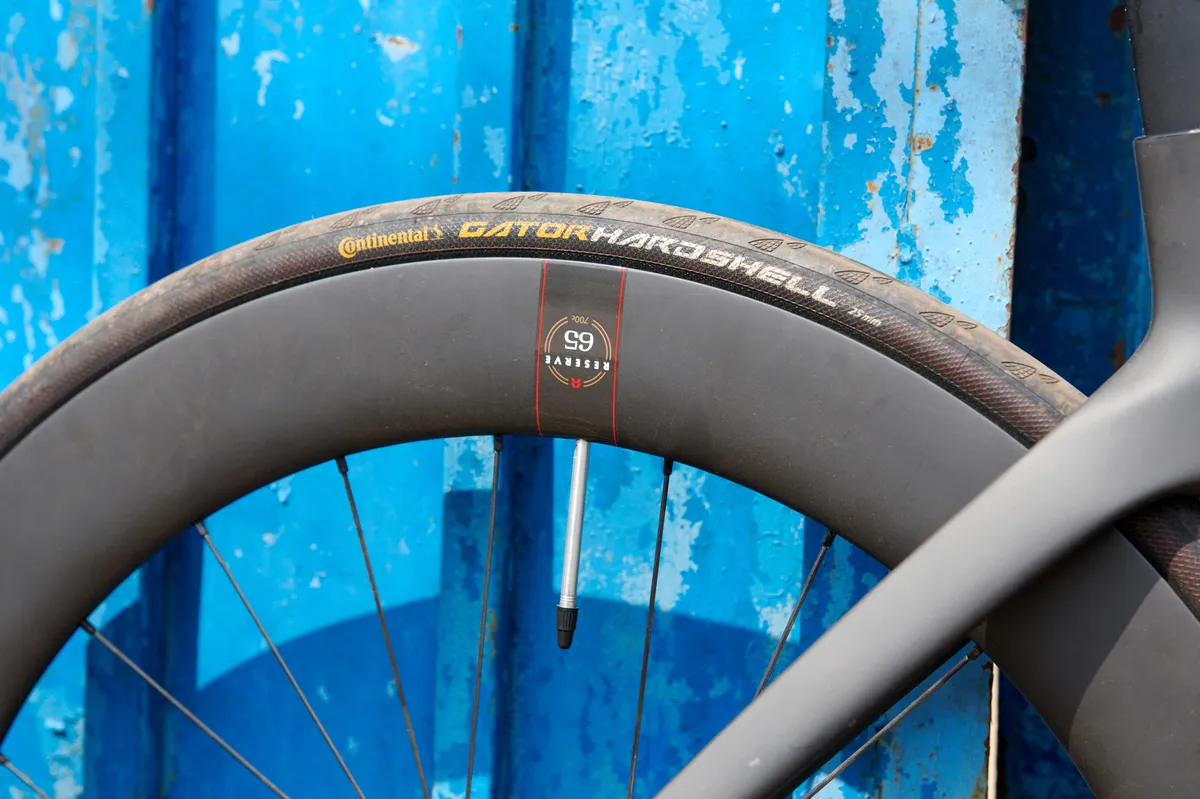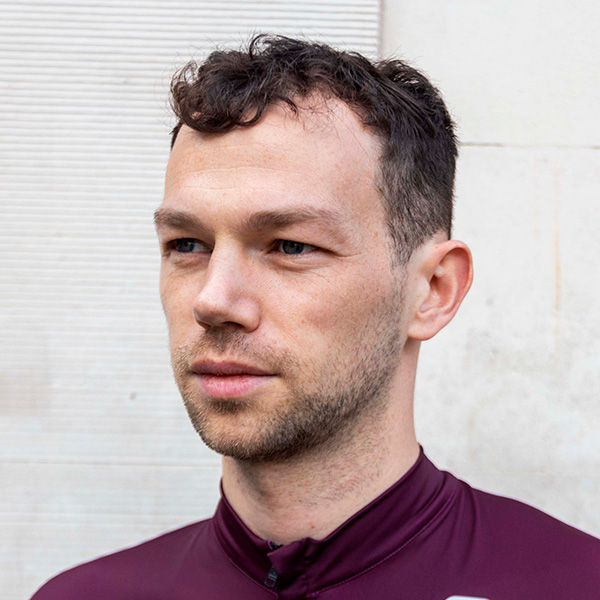The Tour de Lunsar is Sierra Leone’s biggest bike race, set up by bike shop owner Abdul Karim Kamara as a way to give Sierra Leonians the opportunity to race.
The first edition of the race took place in 2013, when 10 riders took to the start line on bikes donated by the US and shipped to West Africa by the Village Bike Project, an NGO that aims to empower communities through strengthening bike culture.
Ten years later, the Tour de Lunsar has grown in size and reputation, attracting cyclists who want to make it professionally.
The 2023 edition of the event started on the 26 April, Sierra Leone’s independence day, with men’s, women’s and junior races, all of which take place on non-closed roads, competing with traffic and causing lengthy tailbacks.
The men’s race is split across four stages. The first starts in Freetown, the country’s capital, and each stage ends in Lunsar.
The women’s race and junior races are single stages culminating in laps of a circuit in Lunsar.
There were 141 competitors in total. 51 riders took part in the men’s race, 19 in the women’s and 70 in the junior competition.
Unlike European races, there are no team buses, just cars that have bikes strapped to them in piles. Nigeria’s Team Access Bank by Pitstop had a masseuse table for its riders – something that is de rigueur at professional races such as the Tour de France, but exceptional at the Tour de Lunsar.
Temperatures rose to 38 degrees and riders sought out shade before setting off.

Cycling may still be a fringe activity in Sierra Leone, but the Tour de Lunsar is helping the sport grow in stature. The 2022 edition was attended by the government minister, Apha Kanu, and it is now in partnership with Science in Sport and has sponsors including Le Col.
The racing in Sierra Leone is a lot more makeshift than in Rwanda, which is set to host the 2025 UCI road world championships and has been a trailblazer for cycling in Africa.
However, the Tour de Lunsar demonstrates an appetite and passion for cycling and bike racing in a way that’s unlike any other competition.
In the words of our photographer Matt Grayson, it is “a story of sporting persistence against adversity” and arguably one of the seedlings of a cycling revolution described in Marlon Moncrieffe’s book Desire Discrimination Determination.
The majority of riders still take part on donated or second-hand bikes, but with an increasing number of riders in Sierre Leone competing and racing at a higher level, the number of high-end bikes at the race is growing, too.
Here we take a look at 10 of the bikes raced at the Tour de Lunsar.
Kerfala Kamara’s Cannondale CAAD8

This Cannondale CAAD8 was ridden at the Tour de Lunsar by Kerfala Kamara, riding for the Freetown-based team C2C in the elite men’s race.
The aluminium road bike shows a heavy dent in the top tube and is decked out with Shimano 105 brakes, Bontrager cranks and American Classic wheels.
There is an IPSXP bike computer on the handlebar with a cable running down to a sensor on the front fork.
Mohamed M Kargbo’s Boardman Sport

While many of the bikes at the Tour de Lunsar come from the United States, Mohamed M Kargbo was racing on a bike from the British brand Boardman for the Lunsar Cycling Team B.
A shallow aluminium rear wheel is matched with a mid-section, carbon Ritchey front wheel.
The bike has a Shimano Tiagra drivetrain with a 10-speed cassette.
Osman Trumpet Kalokoh’s Team USA Felt bike

Some of the riders on the Lunsar Cycling Team A were racing on Team USA Felt bikes, like this one used by Osman Trumpet Kalokoh.
The bikes were purchased in a crowdfunding campaign, having been used previously by riders in different age groups in the USA national cycling programme.
Some had been crashed and damaged, but US mechanic Jamie Bissell repaired the carbon frames, which were then bought by Lunsar Cycling Team.
95 per cent of bikes in Sierra Leone are said to reach the country by shipping containers.
They are donated to organisations such as Working Bikes in Chicago, Village Bicycle Project in Salt Lake City, Mikes Bikes in California and Re-Cycle in the UK.
Ibrahim Kamara’s Planet X Superlight Pro Carbon

C2C’s rider Ibrahim Kamara was racing on a more modern Planet X Superlight Pro Carbon.
The compact carbon frame is decked out with a Shimano 105 drivetrain and brakes components, DT Swiss RC 46 Spline hybrid carbon and aluminium wheels, and a slammed stem.
Kamara raced with a Hammerhead Karoo 2 bike computer.
Sahr Josiah’s Cannondale R1000 Aero

Sahr Josiah rides for the Kono Cycling men’s team and competed on this Cannondale R1000 Aero.
Disrupting the narrative of aero bikes being a relatively new phenomenon, the ‘made in America’ R1000 Aero was released in 2000.
The bike has an integrated seat mast with a cutaway saddle clamped to the top.
The wheels comprise of aluminium Mavic rims laced to Shimano Ultegra hubs and are shod in Michelin Dynamic Sport road tyres with red sidewalls.
The bike has an Ultegra drivetrain with Shimano 150 rim brakes.
Mohamed Bangura’s Specialized Allez

Mohamed Bangura of Kono Cycling Team came second in the junior race.
He rode this Specialized Alllez donated by an American who lived in Kono, in eastern Sierra Leone, roughly 240km from Lunsar.
The disc brake-equipped bike has a mechanical Shimano Ultegra drivetrain with a semi-compact chainset and Shimano 105 shifters.
The Roval C38 carbon wheels are wrapped in S-Works Turbo tyres.
Ali G Koroma’s Procycling steel steed

Racing for the Lunsar Cycling Junior Team, this is Ali G Koroma’s first bike, given to him by Abdul Karim Kamara via the Village Bicycle Project, an organisation that provides bicycles and maintenance training to people in rural villages in West Africa.
The steel frame shows where cables have worn away at the paintwork and rust dots the cassette, rear hub and quick-release axle.
The bike’s drop handlebar eschews bar tape and has stem-mounted shifters.
Preye John Dede’s Giant TCR Advanced

Preye John Dede of Nigeria’s Team Access Bank by Pitstop was the overall race winner in the men’s elite category.
Dede raced on a Giant TCR Advanced in a dream spec comprising of SRAM, Hunt, Continental, CeramicSpeed and Rotor components.
The bike has deep-section Hunt 50 Carbon Wide Aero wheels with Continental GP5000 tyres, a SRAM Red eTap AXS groupset with CeramicSpeed pulley wheels and Rotor power meter cranks.
Dede won the first three stages of the race to claim overall Tour de Lunsar victory, with teammate Bright Emmanuel taking the fourth stage.
Emmanuel launched an attack before heading into the final crit circuit of the fourth stage.
Jack Duncan and Nate Mesmer of Team Mike’s Bikes from the USA tried to close the gap, but Emmanuel held his lead to the finish line.
Mojirayo Olaniyan’s Cervélo S5
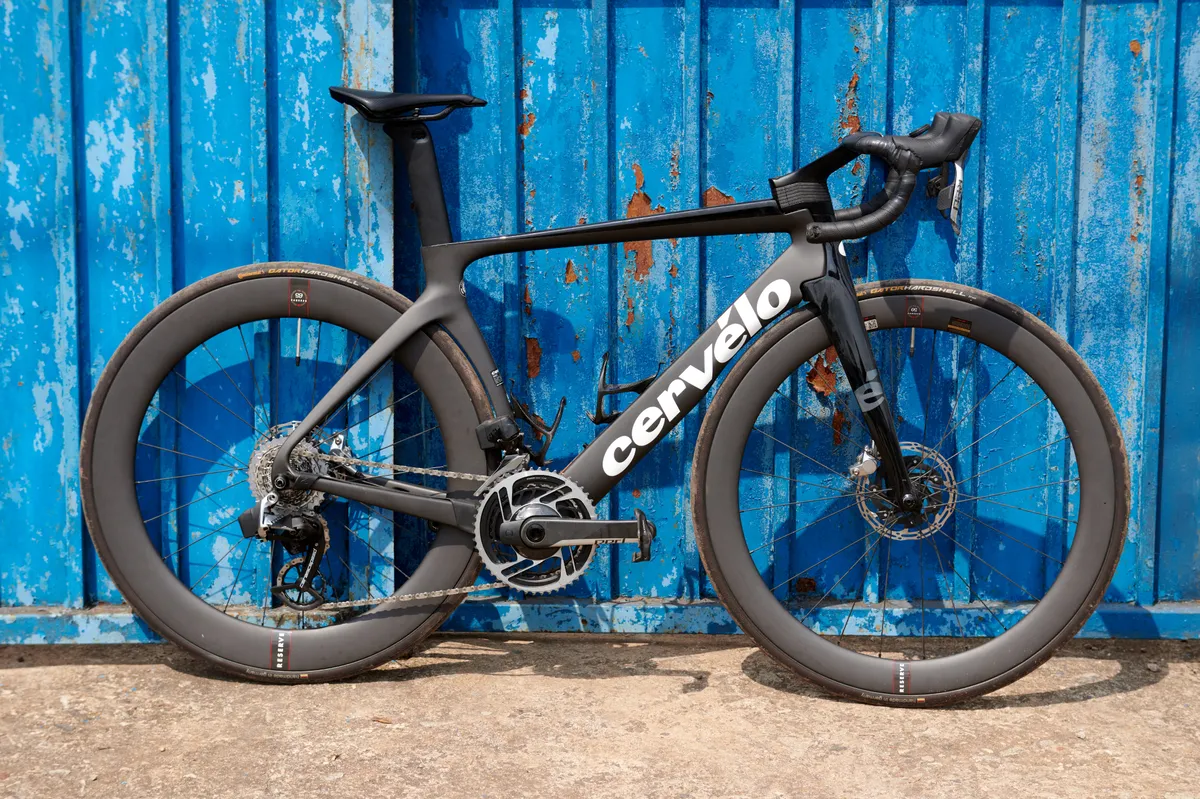
One of the highest-spec bikes at the race was this Cervélo S5 owned and raced by Mojirayo Olaniyan from Team Access Bank by Pitstop.
Olaniyan finished eighth in the women’s race, 17 minutes behind winner Roxanne Hargreaves.
Like Dede’s Giant TCR, Olaniyan’s aero road bike has a SRAM Red eTap AXS groupset with CeramicSpeed pulley wheels.
The Reserve 65mm-deep wheels are wrapped in 25mm Continental Gator Hardshell tyres.
Nate Mesmer’s Cannondale CAAD13 donated by Mike’s Bikes

The Tour de Lunsar saw a number of riders compete on older Cannondale bikes, but Nate Mesmer raced on this Cannondale CAAD13.
Mesmer donated his bike to the Lunsar Cycling Team after the race.
The Mike's Bikes Foundation facilitates bike donations from the USA to Sierra Leone. It works with partner bike shops in Sierra Leone to pay for the shipping of the bikes.

Bikes must have a market value of at least $50 before being sent.
The partners in Sierra Leone sell the bikes or use them for parts. Profits are used to pay wages, help run races and fund cycling projects.
More from the Tour de Lunsar
As well as shooting these bikes, Matt Grayson was on the ground in Sierre Leone to photograph the racing action in the Tour de Lunsar.













